Anthurium magnificum is a stunning tropical plant admired for its large, heart-shaped leaves featuring prominent white veining against a backdrop of deep green. This rare aroid is slow-growing and takes patience to cultivate, but it makes an incredible addition to any plant collection. By understanding this plant’s needs and providing the proper care, you can successfully grow Anthurium magnificum in your home.
About Anthurium magnificum

Sometimes called the “king anthurium,” Anthurium magnificum truly lives up to its name with leaves reaching over 3 feet long on mature plants. The leaves have an almost leather-like texture and emerge with a striking blue color before maturing to a dark green. Mature plants eventually produce an inflorescence with a spike of small pink-red flowers.
Slow but steady growth can be expected from Anthurium magnificum. It may stay quite small for a while before taking off and reaching its full potential height, which can exceed 5 feet tall including the flower spike. Give this beauty ample time grow according to its own pace.
Some key facts about Anthurium magnificum:
- Native to Ecuador
- Considered an easy aroid to grow once acclimated
- Prefers consistent warm temperatures and high humidity
- Requires a well-draining soil and bright, indirect light
- Makes an excellent display plant with its immense leaves
Check Out How to Care Pink Princess Philodendron here
Native Habitat & Growth Conditions
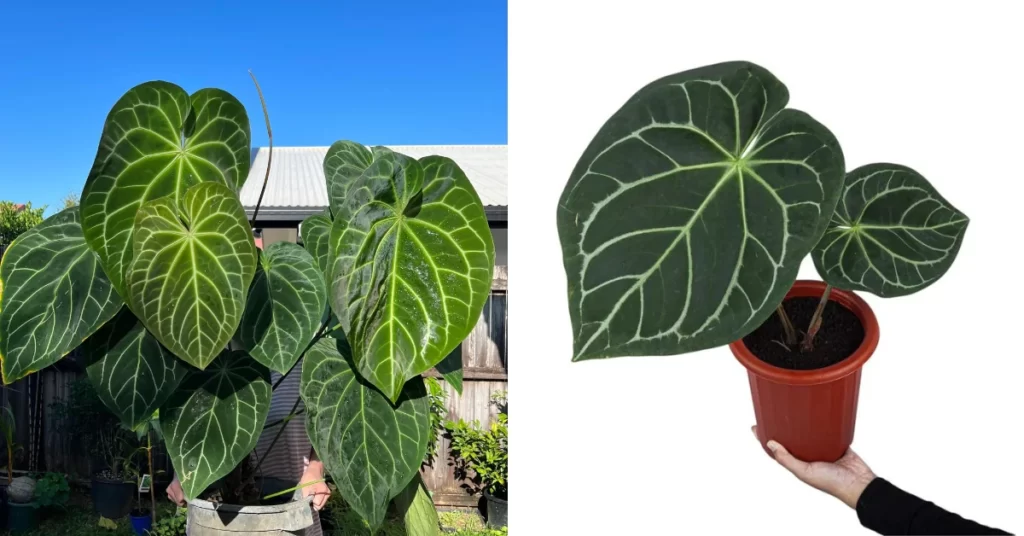
In its native growing grounds of Ecuador, Anthurium magnificum is accustomed to warm temperatures, high rainfall, and indirect light under the forest canopy. Replicating these moist, tropical conditions as much as possible will lead to better success with this plant.
Pay special attention to humidity levels. Anthurium magnificum thrives in 65% humidity or higher. Use a humidifier, pebble trays, or frequently mist the plant if dry air is an issue in your home.
Light Requirements
Anthurium magnificum grows best in bright, indirect sunlight. Some gentle direct sun is fine, but too much will scorch the leaves.
Place the anthurium near an east or south-facing window where it receives 4-6 hours of sunlight filtered through sheer curtains each day. Adjust blinds as needed throughout the seasons. Avoid harsh western sun exposure.
Soil & Potting Mix
A chunky, fast-draining soil mix is vital for healthy roots and lush growth. Use an aroid potting mix specifically blended for anthuriums and other tropical plants. You can also create a mix containing:
- High-quality potting soil
- Perlite or pumice for drainage
- Peat moss to retain moisture
- Orchid bark to aerate the roots
Add in a little bit of activated charcoal to keep the soil fresh and prevent salt build ups over time. Re-pot into this mix once a year or whenever the roots have filled out the current container. Choose a pot with drainage holes and go up just 1-2 inches larger than the previous size.
Check Out How to Grow Prosopis Cineraria here
How to Plant Anthurium Magnificum
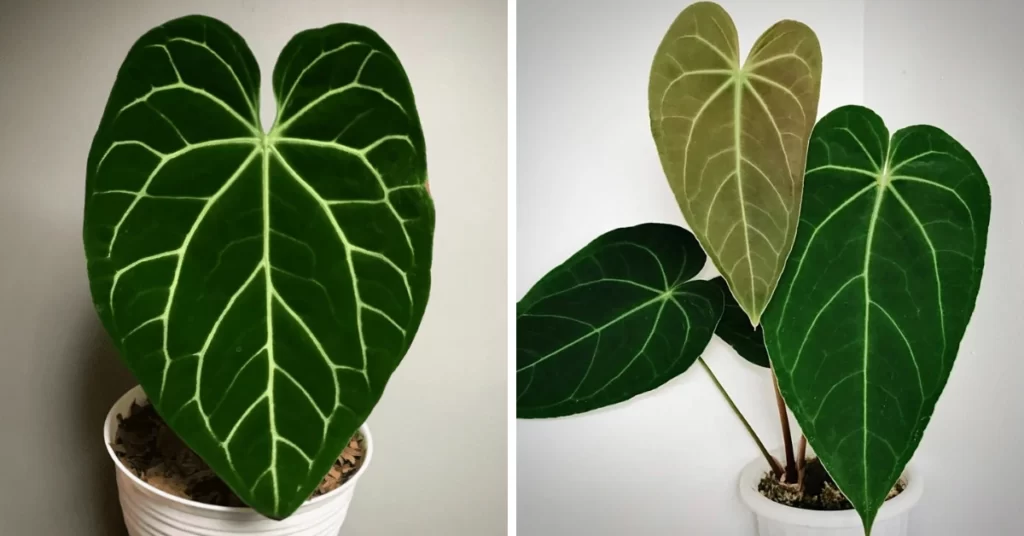
If you have obtained a younger Anthurium magnificum specimen from a nursery or through mail order, follow these tips for a successful transition to growing in your home.
Selecting a Healthy Plant
Inspect new plants closely before purchasing:
- Look for signs of pests or disease. Reject any plants with eggs, webs, etc.
- Check that the foliage is intact and undamaged.
- See that the plant has healthy white roots coming through the drainage holes.
- Select a plant with 1-3 leaves to start out with.
Preparing the Planting Area
Find a warm area with indirect sunlight and 65%+ humidity. Mount a grow light if relying solely on artificial light. Near other tropical houseplants is ideal for shared humidity via transpiration.
Use room temperature water to thoroughly water the plant before transplanting. Allow excess moisture to drain away first.
Planting the Anthurium magnificum
Very carefully remove the plant from its nursery pot, keeping as much soil intact around the roots as possible. Minor root damage can cause setbacks with this species.
Place the plant in the prepared container, filled with a chunky aroid mix. Ensure the base sits just above the soil line it previously grew at. Firmly fill in around the sides with more mix, but do not pack it down tightly.
Top dress with a thin layer of orchid bark or moss. Water again until it runs from the drainage holes. Place a saucer underneath to catch excess water.
Read More About How to Grow Commelina Benghalensi here
Caring for Anthurium magnificum
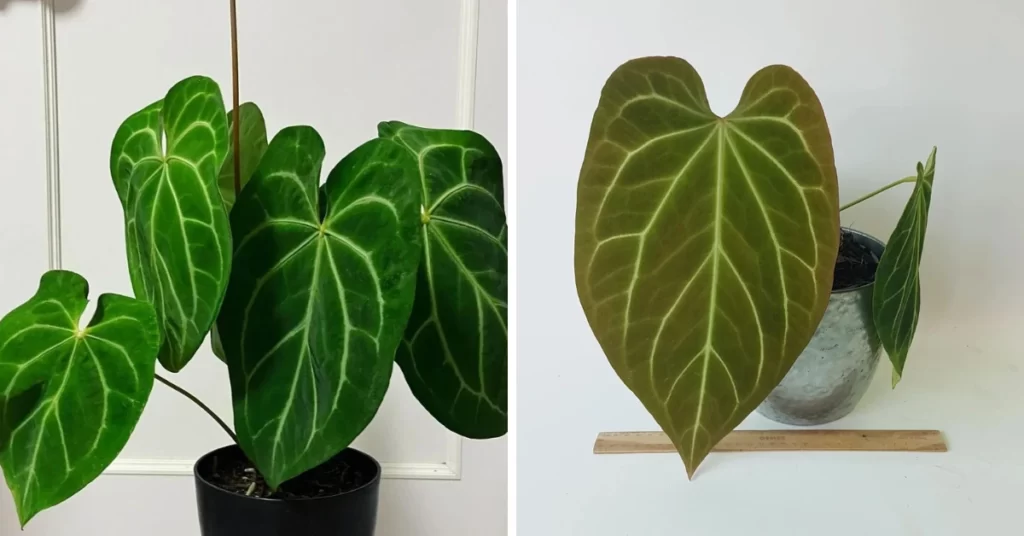
With the right care, you can keep your Anthurium magnificum thriving for years to come. Be attentive to its needs and quickly remedy any issues.
Water Requirements
Allow the top inch of soil to dry out between thorough waterings. During the warmer months, this tropical rainforest native appreciates slightly moist soil at all times. In winter you can cut back on watering frequency. Take care not to overwater or leaves can rot. The foliage will indicate when it needs more or less hydration.
Fertilizing
From spring through fall, feed Anthurium magnificum with a balanced liquid fertilizer diluted to half strength. Any all-purpose orchid or aroid fertilizer works well. Stop fertilizing for the winter.
If using solid slow-release fertilizer pellets, apply once in early spring. Mix the pellets into the top few inches of soil and scratch them in gently around the roots when re-potting.
Temperature & Humidity
Maintain consistent warm temperatures between 75-85°F. Cooler nights around 65°F won’t harm the plant. Use a portable heater or grow lights to keep the surroundings tropical. Monitor humidity levels and mist the plant or use a humidifier if levels drop much below 65%.
Air Circulation
Stagnant air encourages problems like bacterial leaf spot. Improve air flow by using a small rotating fan to gently blow air around the Anthurium. Periodically turn the leaves so all sides get exposure. Just avoid direct cold drafts on the plant.
Pruning & Grooming
Remove any dead or dying foliage at the soil line using sterile pruners. Keeping old leaves cleaned up prevents pests and disease. Also prune off unwanted new growths if the plant gets overcrowded.
Carefully wipe the leaves with a soft damp cloth to keep their surface clean and dust-free. This allows optimal photosynthesis and makes the striking veining stand out beautifully.
Read About How to Grow Acalypha Indica here
Propagating Anthurium magnificum
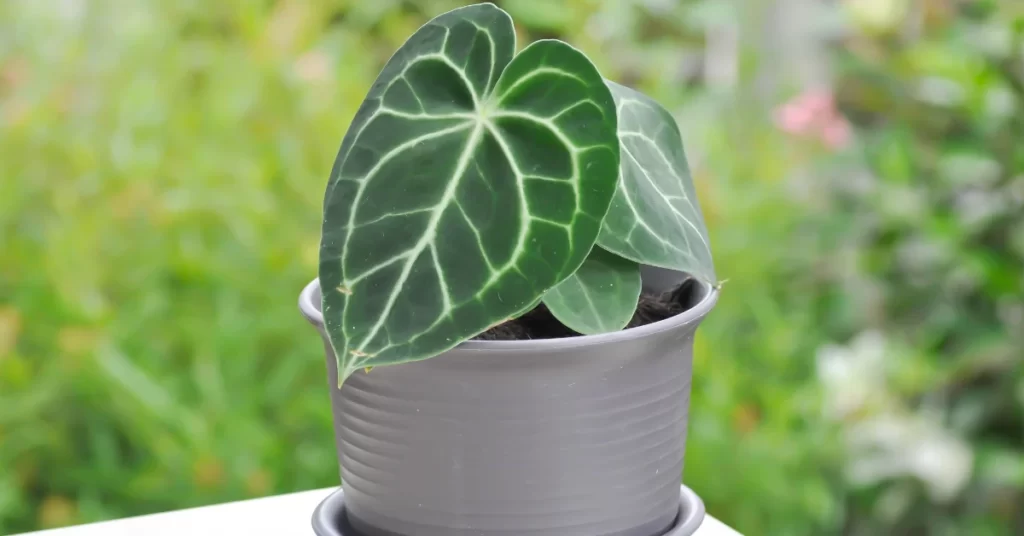
Once your Anthurium magnificum reaches maturity, you can propagate new starter plants by:
Seed Propagation
Collect the red berries after the plant flowers. Remove the seeds and sow them in a sterile seed starting mix. Germination rates are low, so patience is required. Cover lightly with plastic to maintain high humidity as they sprout.
Division Propagation
Gently divide root ball offshoots from the main plant in early spring. Ensure each division has plenty of healthy roots attached before re-planting in appropriate soil mix. Water sparingly until new growth appears.
Stem Cuttings
Take 5-6 inch cuttings in spring or summer. Remove lower leaves and allow the cut end to dry and callous for 1-2 days. Insert into propagation mix, keeping 1-2 nodes above soil. Enclose in a plastic bag until rooted.
Read About How to Grow Pseuderanthemum Plant here
Troubleshooting Common Anthurium magnificum Problems
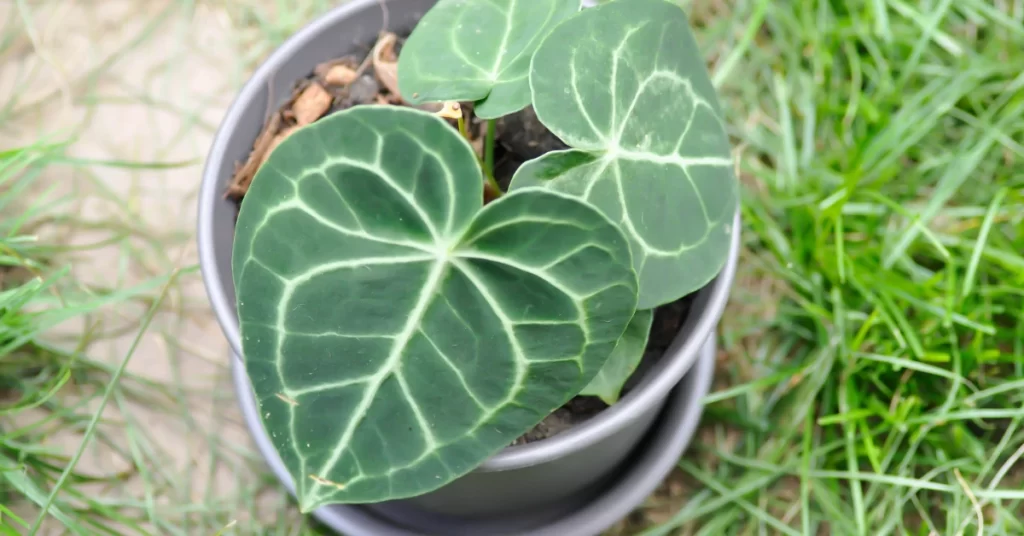
Pay close attention to your plant’s condition and quickly remedy issues to keep it thriving strong.
Drooping Leaves
Overwatering and soggy soil causes roots to rot and leaves to go limp. Allow soil to dry out before watering again. Remove damaged foliage and cut back on moisture. Dying lower leaves also indicate it may be pot bound and need re-potting or division propagation.
Leaf Spots
Bacterial or fungal infections show up as brown spotting on the leaves. Prune affected foliage. Improve air flow and adjust watering to fix excess moisture issues. Keep leaves dry to prevent future spread. Apply copper fungicide if severe.
Mealybugs & Other Pests
Inspect regularly for signs of common houseplant pests like aphids, thrips, scale and mealybugs. Isolate any infested plants immediately. Remove heavy infestations manually. Apply insecticidal soap or neem oil as needed. Keep surrounding areas cleaner going forward and allow the plant to recover. Maintain optimal care to withstand and defend against invaders.
Prevention & Treatment
The keys for pest prevention are proper cultural care, routine inspection, isolation from other plants, and manual removal or chemical treatment if an infestation begins. Keep humidity levels higher and increase air circulation to create a less welcoming environment for these nuisance invaders.
Learn About How to Grow Lagerstroemia Speciosa here
Conclusion

Growing the magnificent Anthurium magnificum brings the splendor of the Ecuadorian rainforest right into your home. While it requires warm temperatures, high humidity, and bright indirect light to flourish, this king anthurium’s sheer size and vibrant foliage make the effort worthwhile. Provide frequent moisture to the soil and fertilizer during the active season. Check new plants closely for pests before bringing them home. With its moderate growth rate, a younger A. magnificum specimen can transform into a statement floor plant over time. Be sure to give it proper support as it matures. Follow these tips to successfully cultivate Anthurium magnificum as a dazzling addition to your plant collection.
FAQs
How often should I water and fertilize my Anthurium magnificum?

During the active growing season of spring through fall, let the soil dry out an inch down before watering thoroughly. Feed with diluted liquid fertilizer every 2-3 weeks during this period. In winter, reduce water and don’t fertilize.
Why is my anthurium’s leaf turning yellow or brown?

Issues like leaf spot diseases or cultural problems with overwatering explain foliar damage. Trim off affected leaves and alter care routine to improve conditions at soil level.
What should I do if my A. magnificum stops growing or produces smaller leaves?

This could indicate it is root bound in too small of a container. Very carefully re-pot into fresh chunky potting mix, moving up just one pot size. Also check fertilizing routine and light/humidity levels.
How can I get my A. magnificum to flower and produce berries?
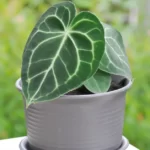
Mature specimens over 3 feet tall may flower when conditions are very optimal. Maintain consistent warm temperatures and high humidity levels year round to encourage blooming.
Should I mist the leaves of my Anthurium magnificum frequently?
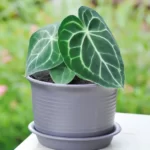
Some occasional gentle misting can boost moisture if indoor air is very dry. But take care not to get the foliage too wet continuously or it can develop fungal issues. Use pebble trays and humidifiers to keep ambient humidity ideal.

1 thought on “How to Grow Anthurium Magnificum?”